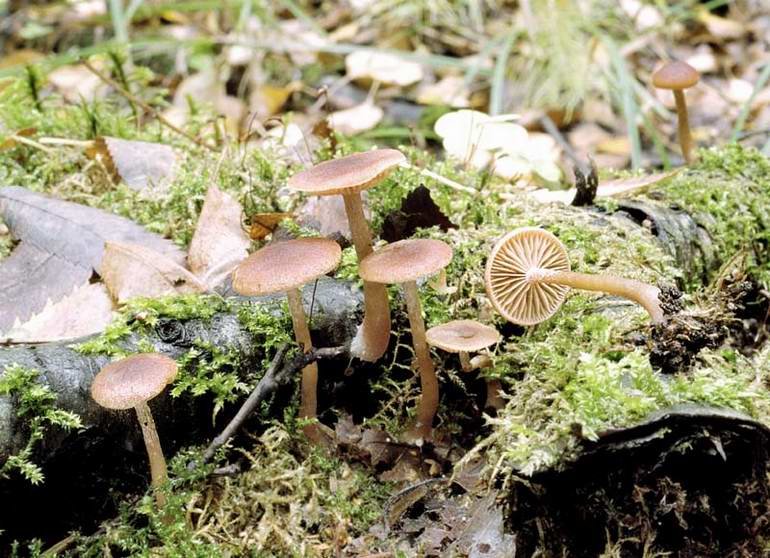Tubaria bran (Tubaria furfuracea)
- Vaega: Basidiomycota (Basidiomycetes)
- Vaevaega: Agaricomycotina (Agaricomycetes)
- Vasega: Agaricomycetes (Agaricomycetes)
- Vasega laiti: Agaricomycetidae (Agaricomycetes)
- Poloaiga: Agaricales (Agaric poʻo Lamellar)
- Aiga: Tubariaceae (Tubariaceae)
- Rod: Tubaria
- ituaiga: Tubaria furfuracea (Tubaria bran)
 Tusitala o le ata: Yuri Semenov
Tusitala o le ata: Yuri Semenov
Ua: small, with a diameter of only one to three cm. In youth, the convex hat has the shape of a hemisphere. The tucked-in velvety edge of the cap becomes almost open with age. In older mushrooms, the cap often takes on an irregular shape with wavy edges. As the fungus grows, the edges express a specific lamellar ribbing. The surface of the yellowish or brown cap is covered with white small flakes, often along the edges and less often in the center. However, the flakes are very easily washed off by rain, and the mushroom becomes almost unrecognizable.
pulupa: pale, thin, watery. It has a pungent odor or according to some sources it has no odor at all. It is believed that the presence and absence of odor is associated with frost.
Faamaumauga: not very frequent, wide, thick, weakly adherent with clearly visible veins. In one tone with a hat or a little lighter. If you look closely at the plates, you can immediately identify bran tubaria, since they are not only veined and rare, they are completely monochromatic. In other similar species, it is found that the plates are colored differently at the edges and an impression of “embossment” is created. But, and this feature does not allow us to confidently distinguish Tubaria from other small brown mushrooms, and even more so from other mushrooms of the Tubarium species.
Spora pauta: omea enaena.
Vaʻa: moderately short, 2-5 cm long, -0,2-0,4 cm thick. Fibrous, hollow, pubescent at the base. It is covered with white small flakes, as well as a hat. Young mushrooms may have small partial bedspreads, which are quickly washed away by dew and rain.
Faʻasalalau: During the summer, the fungus is often found, according to some sources, it can also be found in the fall. It can grow on soil rich in woody humus, but more often prefers old woody remnants of hardwoods. Tubaria does not form large clusters, and therefore remains inconspicuous for the broad masses of mushroom pickers.
Tutusa: There are not many similar mushrooms during the period when most of the finds of this fungus are recorded – namely, in May, and they all belong to the genus Tubaria. In the autumn period, an ordinary amateur mushroom picker is unlikely to be able to distinguish bran Tubaria from other small brown mushrooms with adherent plates and galleria similar to it.
Mea'ai: Tubaria is very similar to galerina, therefore, experiments have not been carried out regarding its edibility.
Faʻaaliga: At first glance, Tubariya seems completely inconspicuous and inconspicuous, but upon closer examination, you can see how unusual and beautiful she is. It seems that Tubaria bran is showered with something like pearls.









